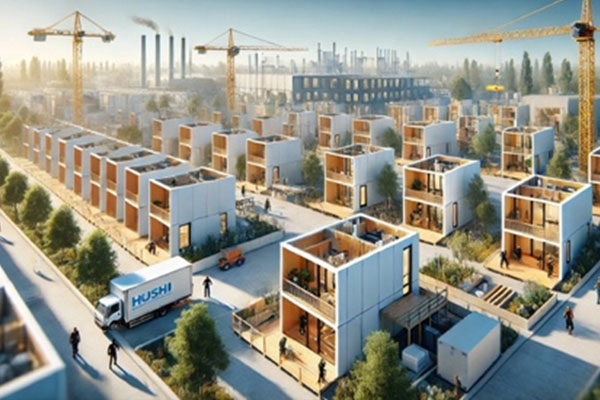The Hidden Pitfalls of Large-Scale Modular Construction
Modular construction is no longer a fringe solution—it’s quickly becoming a mainstream strategy for commercial, industrial, hospitality, and healthcare builds.
Modular construction is no longer a fringe solution—it’s quickly becoming a mainstream strategy for commercial, industrial, hospitality, and healthcare builds. The promise is compelling: faster delivery, controlled costs, and improved quality through factory precision.
But as demand grows and project sizes scale into the hundreds (or even thousands) of modular units, a new set of challenges emerges—often hidden from glossy case studies and sales decks.
As someone who has worked on modular paneling projects ranging from single-site deployments to multi-story urban developments, I’ve seen firsthand how large orders can expose cracks in even the most advanced systems.
Here are a few key pitfalls that every developer, GC, and modular manufacturer should be aware of when scaling up:
1. Factory Congestion and Throughput Challenges
Manufacturing 200–500 modular units for a single project isn’t the same as producing a dozen for a pilot program. Tooling limitations, labor constraints, and space bottlenecks can slow down production. If the production schedule is misaligned with the site timeline—or worse, the manufacturer overcommits—delays ripple across every phase of the project. And once the factory floor is clogged, recovery is slow and expensive.
2. Transportation and Staging Complexity
Large-scale modular projects mean a steady flow of oversize units traveling across long distances. Each module requires specialized transport, permits, escort vehicles, and coordinated arrival windows. Add in unpredictable weather, route closures, or staging constraints at the jobsite, and the logistics equation becomes a high-stakes chess game. One delayed truck can derail an entire installation crew.

3. Site Readiness Misalignment
Too often, we see factories finish units that sit in staging yards waiting for the site to “catch up.” Whether it’s a delay in permitting, foundation work, or utilities, this misalignment causes double-handling, exposure risk, and budget burn. When orders are large, the cost of idling modules—or worse, redoing work due to storage damage—can escalate quickly.
4. Field Integration Across Hundreds of Units
Installing a handful of modular units can go smoothly. Installing hundreds? That’s a different beast. Structural alignment, MEP hook-ups, and fire separation between modules all need precise tolerances. In reality, minor variances across dozens of modules lead to compounding issues in the field. That often results in time-consuming rework and finger-pointing between the factory and field teams.
5. The Risk of Over standardization
To manage large orders efficiently, many manufacturers push toward heavy standardization. While that helps in the factory, it can limit adaptability onsite—especially when client-driven changes, AHJ requirements, or site conditions call for quick pivots. When you’ve already built 200 units, “small changes” can become very big problems.
The Bottom Line:
Scaling modular is not just about building more—it’s about thinking differently across the entire delivery chain. Factory volume, logistics, site prep, and field integration all need to be orchestrated like a symphony. Otherwise, the benefits of modular can be lost to delays, rework, and cost creep.
If you’re considering a large modular project, make sure your team—and your partners—have the experience and systems in place to scale smart.
